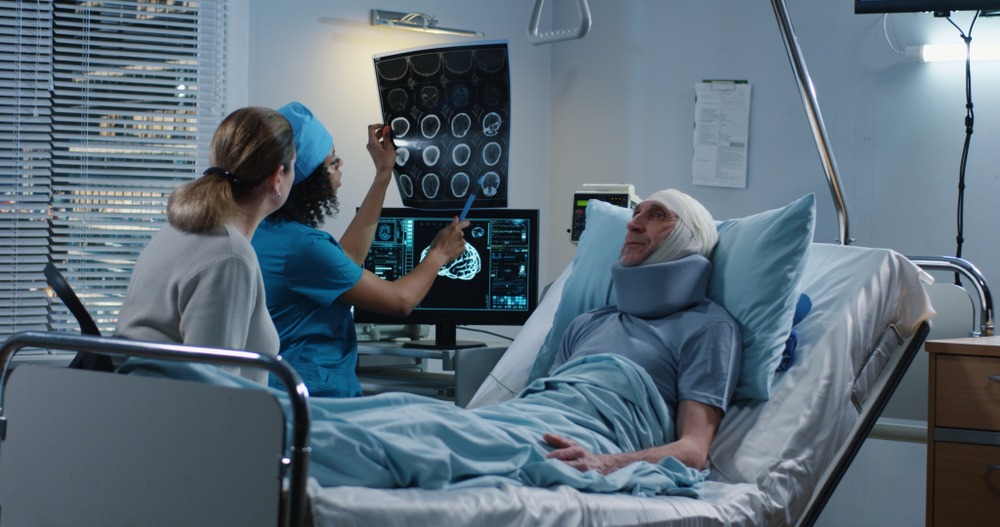![]() Contact Us (866) 499-8989
Contact Us (866) 499-8989
What Was in the Drinking Water at Camp Lejeune?
- What Toxins Were Discovered in Camp Lejeune’s Water?
- What Illnesses Are Linked to the Toxins Found at Camp Lejeune?
- When Were Toxins Found in the Water at Camp Lejeune?
- When Can I File a Camp Lejeune Lawsuit?
- What Can I Do While I Wait to File My Lawsuit?
- What Happens After the CLJA Passes?
- How Long Do I Have to File a Lawsuit?
- When Will a Settlement Be Reached?
- Contact a Camp Lejeune Water Contamination Lawyer Today
- Home
- FAQs
- Personal Injury
- What Was in the Drinking Water at Camp Lejeune?
The Camp Lejeune water contamination disaster is one of the worst cases of toxic exposure in U.S. history. From 1953 to 1987, approximately one million people were exposed to contaminated water at the Camp Lejeune Marine Corps base.
The contaminated water at Camp Lejeune included numerous toxins, but four were most commonly observed. However, what was found in the drinking water was also found in the same water used for bathing, showering, cleaning, cooking, and laundry.
In This Article
- What Toxins Were Discovered in Camp Lejeune’s Water?
- What Illnesses Are Linked to the Toxins Found at Camp Lejeune?
- When Were Toxins Found in the Water at Camp Lejeune?
- When Can I File a Camp Lejeune Lawsuit?
- What Can I Do While I Wait to File My Lawsuit?
- What Happens After the CLJA Passes?
- How Long Do I Have to File a Lawsuit?
- When Will a Settlement Be Reached?
What Toxins Were Discovered in Camp Lejeune’s Water?
While numerous toxins were found in Camp Lejeune’s water supply during the 34-year period between 1953 and 1987, the four most prominent chemicals that led to health risks include:
- Trichloroethylene (TCE)
- Perchloroethylene (PCE)
- Vinyl chloride (VC)
- Benzene
There were two contaminated water treatment facilities at the Camp Lejeuene base, and each had a different primary toxin discovered.
Hadnot Point
The primary contaminant found at Hadnot Point was trichloroethylene. This liquid chemical has no color or odor. The maximum allowable level of TCE is 5 parts per billion (PPB). However, the contaminant was found to be at levels as high as 1,400 PPB. This is 280 times the maximum limit.
Other contaminants found at Hadnot Point include PCE, DCE (trans-1,2-dichloroethylene), vinyl chloride, and benzene. Sources of contamination included leaking underground storage tanks and waste disposal sites.
Tarawa Terrace
The primary contaminant found at Tarawa Terrace was perchloroethylene. This liquid chemical also has no color but does have a mild odor. Like TCE, the maximum allowable level of PCE is 5 PPB. However, the contaminant was found to be at levels as high as 215 PPB. This is 43 times the maximum limit.
The primary source of contamination came from ABC One-Hour Cleaners, a nearby off-base dry cleaning company. The other water treatment plant serving Camp Lejeuene, Holcomb Boulevard, was generally uncontaminated.
For a free legal consultation, call (866) 499-8989
What Illnesses Are Linked to the Toxins Found at Camp Lejeune?
The toxins found at Camp Lejeune are primarily used as metal cleaning solvents (TCE), dry cleaning and metal degreasing (PCE), manufacturing PVC products (VC), and manufacturing plastics, resins, and nylon and synthetic fibers (benzene).
People exposed to these chemicals by ingesting or coming into contact with them have suffered from numerous and various illnesses and diseases, from cancer and birth defects to neurological disorders and other health concerns.
Reported illnesses relating to Camp Lejeune’s water contamination include:
- Parkinson’s disease
- Non-Hodgkin lymphoma
- Leukemia
- ALS (Lou Gehrig’s disease)
- Lung cancer
- Liver cancer
- Bladder cancer
- Esophageal cancer
- Kidney cancer
- Renal cancer
- Breast cancer
- Cervical cancer
- Multiple myeloma
- Cardiac defects
- Brain damage
- Epilepsy
- Neurobehavioral effects
- Hepatic steatosis
- Immune disorders
- Aplastic anemia (and other bone marrow conditions)
- Myelodysplastic syndromes
- Scleroderma
- Miscarriage
- Infertility
- Birth defects (especially neural tube defects, such as spina bifida)
When Were Toxins Found in the Water at Camp Lejeune?
Toxins were first discovered in the Camp Lejeune water supply in the early 1980s after the Environmental Protection Agency (EPA) created new regulations that required the Marine Corps to begin testing the water.
These tests revealed a multitude of contaminants in the drinking water at Camp Lejeune at rates dozens and even hundreds of times higher than the maximum levels allowed by safety regulations. However, rather than share this discovery and shut down the contaminated water wells, officials chose to cover it up.
The most prominent part of this coverup came in the form of a falsified report to the EPA in April 1983, which stated that there were no contamination issues at the base. Finally, in the mid-80s, amidst stricter regulations by the EPA, the Marine Corps agreed to shut down the contaminated wells.
Click to contact our personal injury lawyers today
When Can I File a Camp Lejeune Lawsuit?
Finally, after a decades-long wait, victims will soon be able to file lawsuits against the government and collect compensation. At some point in the very near future, the Camp Lejeune Justice Act (CLJA) of 2022 should pass the final procedural hurdles it faces and reach the desk of President Biden.
Until now, those exposed to the contaminated water at Camp Lejeune Marine Corps base were prevented from filing a lawsuit against the government because of North Carolina’s statute of repose law. However, when the CLJA gets signed into law, this barrier will be sidestepped, and Camp Lejeune victims will finally be able to sue for compensation.
It is hard to say exactly when the CLJA will be finalized. It passed in the House of Representatives, then passed in the Senate, with some revisions that required it to be sent back to the House for another vote. At this point, some procedural issues were raised, and these need to be resolved before the bill can move forward.
While these administrative issues are unlikely to derail the legislation at this point, they do continue to delay it. The bill was originally expected to be signed into law in early summer. However, now late summer seems like a more likely target.
Complete a Free Case Evaluation form now
What Can I Do While I Wait to File My Lawsuit?
While you wait for the slow wheels of government to turn, you can still take action to move forward with your case. The best thing you can do for now is to contact an experienced personal injury lawyer who can help you prepare for your upcoming lawsuit.
Our team of experienced lawyers can help you gather together all the evidence you need and prepare all the proper documents so that when the CLJA passes, you will be fully prepared to file your lawsuit and pursue compensation.
What Happens After the CLJA Passes?
Once the CLJA is signed into law, things will begin to move quickly. Many victims will file lawsuits in the days and weeks after the law is passed, and those will likely be consolidated into a multidistrict litigation (MDL) class action lawsuit.
Consolidation will most certainly be supported by both the government and the plaintiffs as it will make litigation cheaper and simplify the legal process for these cases. This will allow for a quicker resolution and for victims of the Camp Lejeune water contamination to finally get the compensation they need and deserve.
How Long Do I Have to File a Lawsuit?
After the CLJA is signed into law, victims of the water contamination will have up to two years to file a lawsuit against the government. After this two-year window has closed, the opportunity to recover compensation will likely go with it. Don’t miss your opportunity to finally get the compensation you deserve.
When Will a Settlement Be Reached?
It is difficult to say when a global settlement payout will be made, especially considering that the CLJA is still waiting to be finalized. However, you can expect the government to move quickly to reach an agreement and put this ugly chapter in U.S. history in the past.
The government is unlikely to fight these claims in court after going through all the trouble to create a path for the victims to recover compensation. There is a very strong possibility that they will agree to terms for a payout before a single case goes to trial.
Contact a Camp Lejeune Water Contamination Lawyer Today
At Zanes Law, we are dedicated to helping victims of the Camp Lejeune contaminated drinking water finally get the justice they deserve and the money they need after far too long of a wait. We can help you begin to prepare your case today so that you are ready to file your lawsuit and recover your part of the forthcoming global settlement payout.
Give us a call or fill out our online contact form to get started with a free case review today. A member of our team will look over your case and advise you of the next steps to take. There is no obligation to retain our services, so don’t hesitate to reach out to us today.
Call or text (866) 499-8989 or complete a
Free Case Evaluation form
 Injury Lawyer Doug Zanes Interviewed For “Business Leader Spotlight”
Injury Lawyer Doug Zanes Interviewed For “Business Leader Spotlight”
Doug was recently interviewed by Randy Van Ittersum on the "Business Leader Spotlight Show." It was a great experience and gave him the opportunity to share important topics that are super
 Need Personal Injury Legal Advice? Listen to Our NEW Podcast by Doug Zanes!
Need Personal Injury Legal Advice? Listen to Our NEW Podcast by Doug Zanes!
We are excited to announce that we have officially launched the Zanes Law Personal Injury Legal Tips podcast, featuring advice from Zanes Law owner and responsible attorney Doug Zanes. When
 Should you hire an injury attorney? 5 Things You Need to Know
Should you hire an injury attorney? 5 Things You Need to Know
We know that when you’ve been injured in an accident, it can be difficult to take legal action quickly. After an accident, you might just want everything to be over and done with, so you
 Can I Settle An Injury Claim On My Own?
Can I Settle An Injury Claim On My Own?
Nobody expects to be in an accident—let alone get injured in an accident—but when it does happen, you may be asking yourself a lot of questions, including, “Can I settle an injury claim on my
Receive a Free, No-Obligation, Case Evaluation Now



